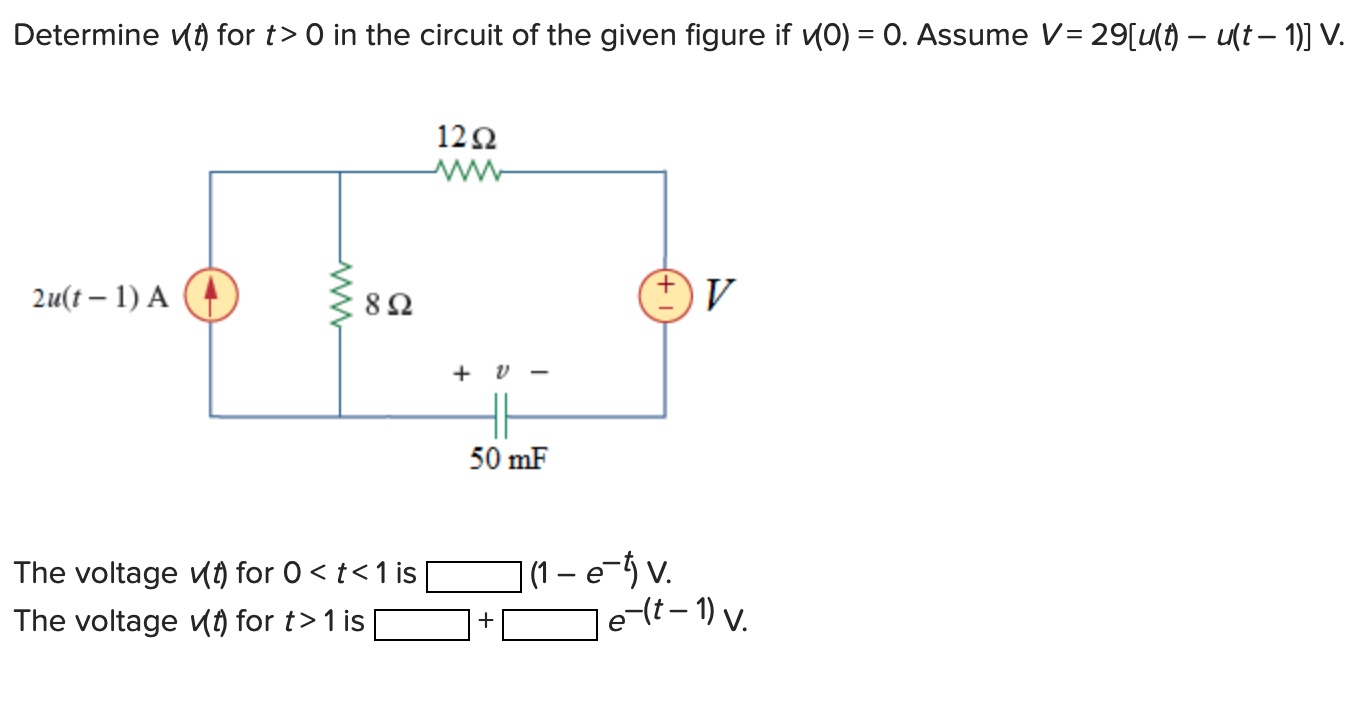Home /
Expert Answers /
Electrical Engineering /
determine-backslash-t-for-t-0-in-the-circuit-of-the-given-figure-if-backslash-0-pa277
(Solved): Determine \( \backslash(t) \) for \( t>0 \) in the circuit of the given figure if \( \backslash(0) ...
Determine \( \backslash(t) \) for \( t>0 \) in the circuit of the given figure if \( \backslash(0)=0 \). Assume \( V=29[u(t)-u(t-1)] \mathrm{V} \). The voltage \( \backslash(t) \) for \( 01 \) is \[ \begin{aligned} &\left(1-e^{-t}\right) \mathrm{V} . \\ +& e^{-(t-1)} \mathrm{V} \end{aligned} \]
